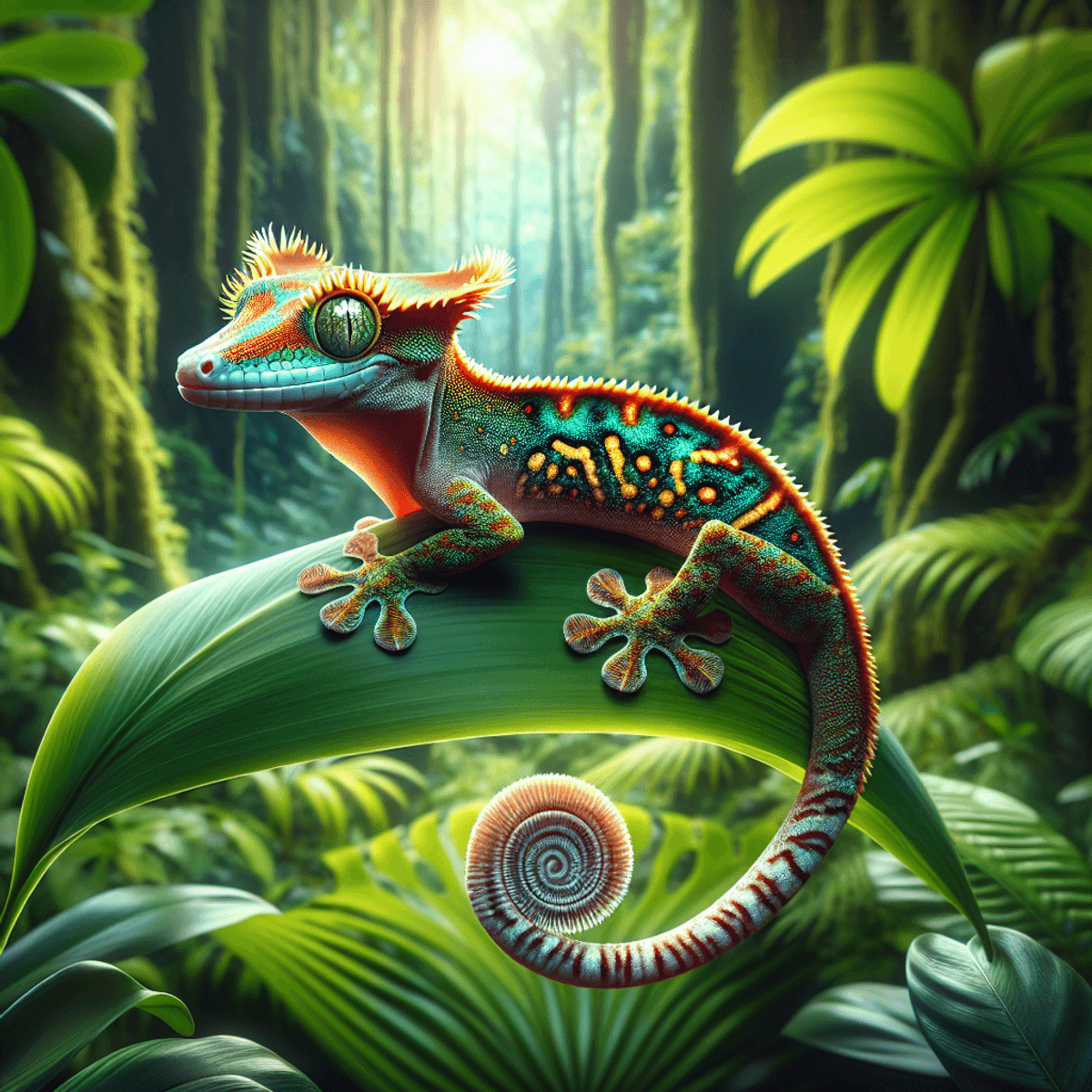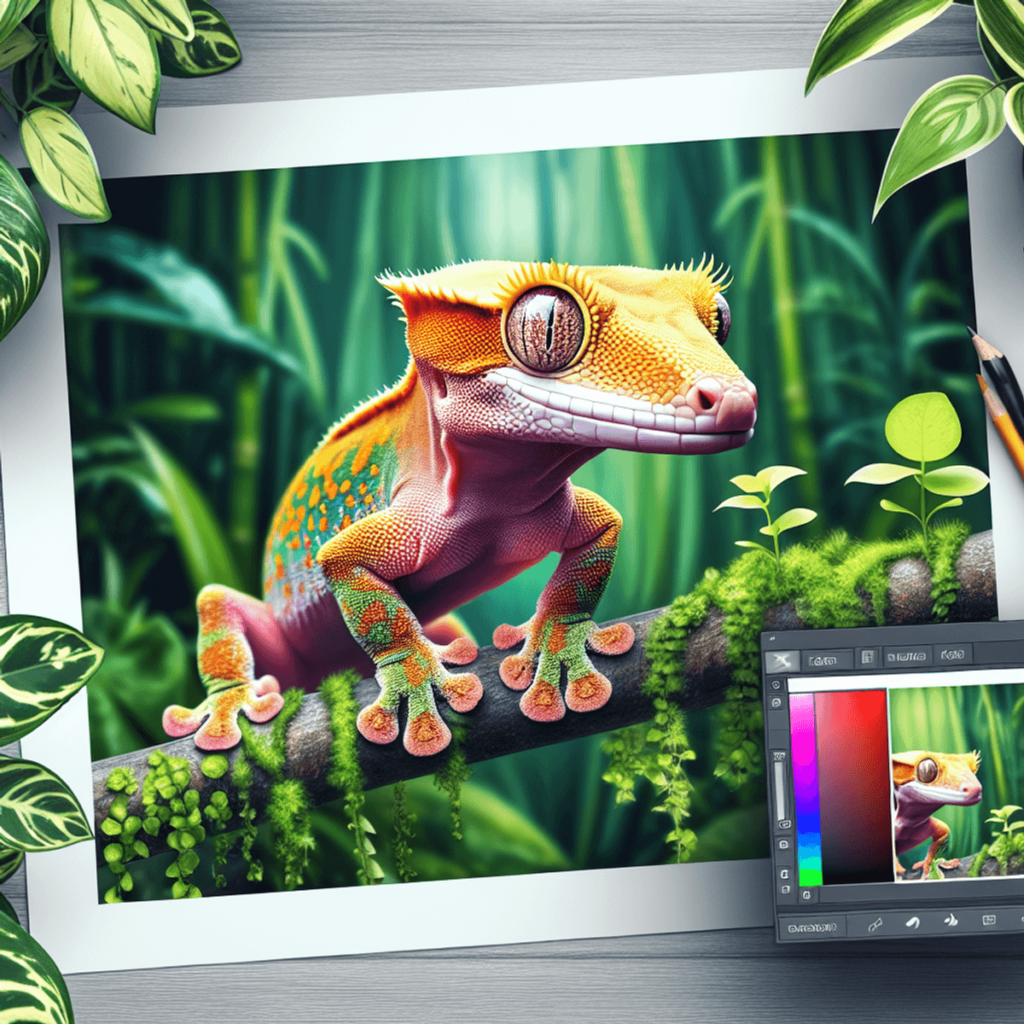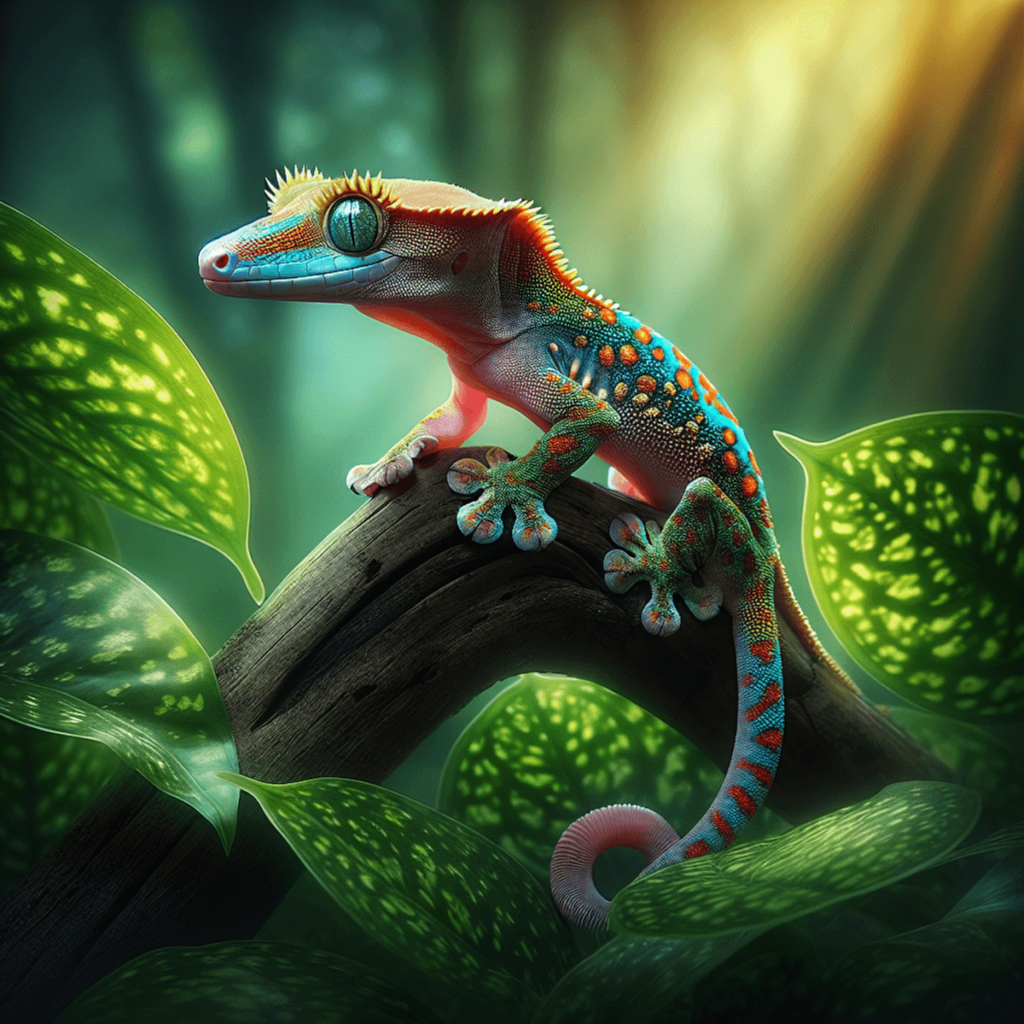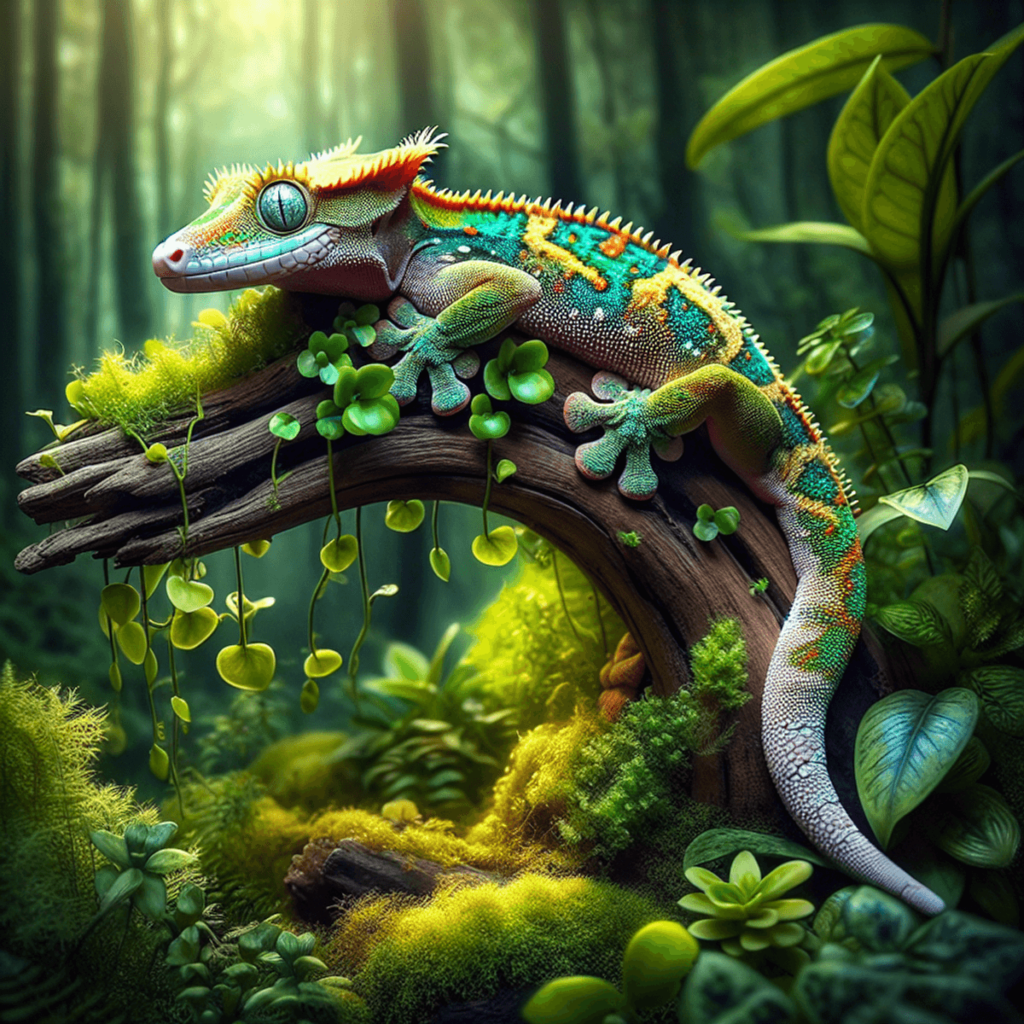
10 Surprising Facts About Crested Gecko You Need to Know
Ever wondered about the charming little creatures called crested gecko? Also known by their scientific name, Rhacodactylus ciliatus, these fascinating reptiles have become incredibly popular in the pet world. They were once believed to be extinct until they were rediscovered in 1994, and since then, they have become a top choice for exotic pet lovers.
Crested geckos are celebrated for several reasons:
- Easy Maintenance: With a docile temperament and relatively simple care needs, they are perfect for novice pet owners.
- Unique Appearance: Their distinctive eyelash-like projections and vibrant color variations make them visually striking.
- Longevity: These geckos can live up to 20 years with proper care, offering long-term companionship.
In this article, you’ll uncover:
- The natural habitat and origins of crested geckos.
- Their unique physical traits and behaviors.
- Insights into their diet, housing requirements, and common health issues.
- Tips for handling and breeding these adorable reptiles.
- Fun facts that make crested geckos even more intriguing.
Let’s dive into the world of crested geckos and discover why they might just be the perfect pet for you!

1. Origin and Habitat
Crested geckos, also known as Correlophus ciliatus, come from the beautiful islands of New Caledonia in the southwest Pacific. These islands are full of unique plants and animals that can’t be found anywhere else. The crested gecko’s natural home is mainly the rainforests, where they live among thick plants and tall trees.
Rediscovery and Conservation
In 1994, scientists were thrilled to rediscover these geckos, which were thought to be extinct. This discovery not only sparked interest in saving them but also introduced them to the pet world, where they quickly became popular due to their cute looks and easy care needs.
Importance of Their Habitat
The rainforests of New Caledonia, along with its dry forests, are vital for many species. By keeping these forests healthy, we ensure that animals like the crested gecko can continue to live there. Their presence reminds us of how connected our world’s ecosystems are and highlights the need for ongoing efforts to protect them.
Understanding where crested geckos come from and where they live helps us appreciate their natural beauty and significance even more.
2. Unique Physical Features
Crested geckos, often affectionately called “eyelash geckos,” have several unique physical features that set them apart from other reptiles.
Eyelash-like Projections
One of the most striking characteristics of these geckos is their eyelash-like projections. These are small, delicate structures above their eyes that resemble eyelashes. While they don’t serve a functional purpose like real eyelashes, they certainly add to the gecko’s charm and give them a distinctive look.
Prehensile Tail
Another fascinating feature is their prehensile tail. This tail acts almost like a fifth limb, allowing the crested gecko to grasp onto branches and other surfaces while climbing. It’s incredibly agile and helps the gecko navigate its arboreal habitat with ease. If you’ve ever watched one climbing, it’s like watching a tiny acrobat in action!
Size
In terms of size, crested geckos typically range from 7 to 9 inches in length, including their tails. This moderate size makes them easy to handle and house, which is another reason why they’re popular among pet owners.
Their unique physical traits not only make them visually appealing but also well-suited for life in the trees and foliage of their native New Caledonia.
3. Lifespan and Temperament
Lifespan
Crested geckos can live anywhere from 10 to 20 years with proper care, making them a long-term companion for pet owners. This longevity gives you plenty of time to bond and enjoy their company.
Temperament
Crested geckos are known for their docile nature. They rarely show aggression, which makes them an ideal choice for both novice and experienced reptile enthusiasts. Their calm demeanor is complemented by their curious and friendly behavior, allowing for enjoyable interactions.
Why They Are Low-Maintenance Pets:
- Diet: Their omnivorous diet is easy to manage. You can feed them commercial diets supplemented with fruits like bananas and peaches, along with insects such as crickets.
- Housing Requirements: They don’t need overly complex setups. A terrarium with vertical climbing space, maintained at appropriate temperature and humidity levels, will suffice.
- Health: Regular check-ups with an exotic pet veterinarian help ensure they stay healthy without requiring intensive care routines.
Their combination of longevity, gentle temperament, and manageable care needs make crested geckos a popular choice among pet owners.
4. Morphs and Color Variations
Crested geckos come in an amazing variety of morphs and color patterns, making each one unique and highly desired in the pet trade. These morphs are essentially genetic variations that result in different colors, patterns, and textures.
Some of the most popular morphs include:
- Harlequin: This morph is known for its striking pattern of contrasting colors, often with bright oranges and yellows against a dark base.
- Flame: Featuring a lighter dorsal stripe running down the back, this morph can have varying shades of red, orange, or yellow.
- Pinstripe: Defined by two parallel stripes along their backs, pinstripes are particularly admired for their clean and distinct lines.
- Dalmatian: Aptly named for its spots, this morph has black or red speckles scattered across its body.
Pet owners often seek these specific color patterns because they add to the aesthetic appeal of their pets. Each morph can have multiple variations in color intensity and pattern distribution, making no two geckos exactly alike.
The impact on the pet trade is significant. Breeders continue to develop new morphs to cater to enthusiasts looking for unique and rare specimens. This variety not only increases the demand but also raises the overall value of crested geckos within the market. It’s fascinating how these intricate designs are a result of selective breeding practices aimed at enhancing specific traits.
Interestingly, recent studies have shown that these selective breeding practices can also have far-reaching implications on the overall health and genetic diversity of captive reptile populations. Understanding these morphs helps potential owners choose a crested gecko that best fits their visual preference while adding a bit of flair to their reptile collection.

5. Diet and Feeding Habits
Crested geckos eat both plants and insects, which is crucial for their health.
What They Eat
They mainly consume:
- Insects: Crickets, roaches, and mealworms are popular choices.
- Plant Matter: Fruits like bananas, peaches, and figs.
When to Feed Them
To keep your crested gecko healthy:
- Juveniles: Feed daily with a mix of commercial diets and fresh insects.
- Adults: Feed every other day, alternating between commercial diets and live insects.
Why Use Commercial Diets?
Commercial diets are specially made to give the right nutrients. Go for good-quality brands that have vitamins and minerals. Add fresh fruits to these diets for variety and to make sure your gecko gets all the nutrients it needs.
Pro Tip: Always remove uneaten food after 24 hours to prevent mold growth and maintain a clean habitat.
Feeding your crested gecko properly ensures they thrive and remain vibrant in color.
6. Housing Requirements
When setting up a home for your crested gecko, there are a few key factors to consider. A proper terrarium setup ensures your gecko remains healthy and happy.
Ideal Terrarium Dimensions
Crested geckos thrive in vertical spaces, given their arboreal nature. An 18x18x24 inch terrarium provides ample room for climbing and exploring. Including branches, vines, and foliage mimics their natural habitat, encouraging natural behaviors.
Maintaining Humidity Levels
Humidity is crucial for crested geckos. Aim to keep humidity levels between 50-70%. Regular misting of the terrarium helps maintain these levels. Using a hygrometer can help you monitor and adjust as needed.
Temperature Requirements
Temperature plays a significant role in your gecko’s well-being. During the day, temperatures should be maintained between 72-80°F. Nighttime temperatures can drop slightly, but ensure they stay within the range of 65-75°F. A digital thermometer helps keep track of temperature fluctuations.
Creating an optimal environment with these parameters ensures your crested gecko lives comfortably and healthily. For those considering other reptiles like the Senegal chameleon, it’s worth checking out some hints on their husbandry, which shares some similarities with crested gecko care.
7. Common Health Problems
Crested geckos, like any pet, can face several health issues throughout their lives. Understanding these common ailments and their prevention is crucial for keeping your gecko healthy and happy.
Typical Health Problems
- Metabolic Bone Disease (MBD): One of the most prevalent issues in crested geckos. This condition arises from calcium deficiency and poor UVB light exposure. Symptoms may include lethargy, tremors, and bone deformities.
- Skin Issues: These can range from shedding problems to infections caused by retained shed or injuries.
- Parasites: Internal parasites like worms and external parasites such as mites can affect your gecko’s overall health.
- Respiratory Infections: Often due to improper humidity levels or temperatures, symptoms include wheezing and discharge from the nose or mouth.
Importance of Regular Vet Check-ups
Regular check-ups with an exotic pet veterinarian are essential. These specialists have the expertise needed to diagnose and treat the unique health issues that crested geckos may encounter. Routine vet visits help catch potential problems early, ensuring your pet receives timely treatment.
Keeping a close eye on your gecko’s behavior and physical condition can also be a proactive way to spot any signs of illness early. Healthy diet, proper habitat conditions, and regular veterinary care form the cornerstone of preventing most common health problems in crested geckos.
8. Breeding Crested Geckos
Breeding crested geckos can be a rewarding experience for reptile enthusiasts. These geckos are relatively easy to breed in captivity, given the right conditions. To start, you’ll need a healthy pair of adult geckos, typically over a year old and weighing at least 35 grams each.
Basic Overview of Breeding Practices
Pairing
Introduce the male and female geckos in a spacious terrarium. Observe them closely to ensure they are compatible and not aggressive towards each other.
Environment
Maintain optimal conditions with temperatures between 72-80°F and humidity levels around 50-70%. Provide plenty of hiding spots and vertical space for climbing.
Feeding
Ensure both geckos are well-fed with a balanced diet of insects and commercial fruit mixes.
Description of the Egg-Laying Process
Once mating has occurred, the female will lay eggs about 30 days later. She usually lays two eggs at a time, burying them in moist substrate like sphagnum moss or vermiculite.
Incubation
Carefully remove the eggs and place them in an incubator set at around 72-78°F. Keep the humidity high to prevent the eggs from drying out.
Hatching
Incubation lasts approximately 60-90 days. Monitor the eggs regularly and mist them lightly if necessary.
Care for Hatchlings
When the hatchlings emerge, they’re tiny replicas of their parents. Place them in small containers with proper ventilation, maintaining similar temperature and humidity levels as adults.
Feeding Hatchlings
Start feeding hatchlings small fruit-based diets and tiny insects like pinhead crickets after their first shed.
Monitoring Health
Keep an eye on their growth and health, ensuring they’re eating well and staying hydrated.
Breeding crested geckos not only adds to your collection but also contributes to the diversity of morphs available in captivity.
9. Handling and Behavior
Handling crested geckos can be a delightful experience if done correctly. These little creatures are generally docile, but it’s crucial to follow best practices to ensure their safety and comfort. For a more comprehensive guide on safely handling reptiles, you might find this resource helpful.
Best Practices for Safely Handling Crested Geckos
- Approach Gently: Always approach your gecko slowly and calmly. Sudden movements can startle them.
- Support Their Body: Use both hands to support their body fully. One hand should be under their belly, while the other can be used to guide them.
- Avoid Grabbing the Tail: Their tails are quite sensitive and can detach if they feel threatened. Though they can’t regenerate them like some other lizards, losing a tail is a defense mechanism.
- Limit Handling Time: Keep handling sessions short, around 10-15 minutes, to avoid stressing them out.
Techniques to Calm a Nervous Gecko During Handling
- Create a Quiet Environment: Loud noises and bright lights can make your gecko anxious. Handle them in a calm, quiet space.
- Use Gentle Motions: Slow and gentle movements help in making your gecko feel secure.
- Allow Exploration: Let your gecko explore your hands and arms at their own pace. This builds trust over time.
- Talk Softly: A soft voice can have a calming effect on your pet.
Remember, patience is key when it comes to handling crested geckos. Every individual has its unique personality, so getting to know about crested gecko behavior will help you build a better relationship with your pet. Additionally, understanding how to reduce stress for reptiles during handling can significantly improve the experience for both you and your pet.

10. Fun Facts about Crested Geckos
Crested geckos have some fascinating quirks that make them stand out. Here are some surprising facts about crested geckos that you might not know:
Tail Loss as a Defense Mechanism
One of the most intriguing behaviors is their ability to drop their tails when threatened. This act, known as autotomy, can startle predators and give the gecko a chance to escape. Unlike some other lizards, crested geckos do not regenerate their tails once lost. The stump heals over, leaving a smooth patch behind.
Nocturnal Nature
These geckos are primarily nocturnal, which means they are most active during the night. During the day, they tend to hide in shaded areas or among foliage to avoid the daylight and potential predators.
Social Interactions with Other Reptiles
While not overly social, crested geckos can sometimes be housed together with other geckos of similar size and temperament. However, it’s essential to monitor them closely for any signs of aggression or stress.
These unique behaviors add to the charm of keeping crested geckos as pets. Their ability to adapt and survive through such intriguing mechanisms is genuinely remarkable.
Conclusion
Crested geckos make fantastic pets for both beginners and experienced reptile enthusiasts. Their engaging behavior, relatively simple care requirements, and striking appearances make them a joy to own. If you’re considering a pet that offers both companionship and a touch of the exotic, crested geckos deserve a spot at the top of your list.
- Ease of Care: With their low-maintenance needs, they fit well into busy lifestyles.
- Longevity: Their long lifespan means you’ll have a scaly friend for many years.
- Unique Traits: From their prehensile tails to their mesmerizing morphs, there’s always something new to discover.
Adopting a crested gecko can be an immensely rewarding experience. Ready to welcome one into your home? You won’t regret it!
FAQs (Frequently Asked Questions)
What is the origin and natural habitat of crested geckos?
Crested geckos originate from New Caledonia, where they inhabit a variety of environments. Their rediscovery in 1994 highlighted their environmental significance and the need to preserve their natural habitat.
What are some unique physical features of crested geckos?
Crested geckos are known for their distinctive eyelash-like projections and their prehensile tail, which aids in climbing. They typically range in size from 7 to 9 inches.
How long do crested geckos live and what is their temperament?
Crested geckos have an average lifespan of 10 to 20 years. They are known for their docile temperament, making them low-maintenance pets that are suitable for both beginners and experienced reptile owners.
What types of morphs and color variations exist in crested geckos?
There are various morphs and color patterns available in the pet trade, each appealing to different pet owners. These variations can significantly impact the pet trade market.
What should be included in a crested gecko’s diet?
Crested geckos have an omnivorous diet that includes plant matter and insects. A recommended feeding schedule is essential for optimal health, and commercial diets supplemented with fruits are highly beneficial.
What are the housing requirements for crested geckos?
An ideal terrarium setup for crested geckos should provide adequate climbing space, maintain humidity levels between 50-70%, and ensure temperatures range from 72-80°F during the day.


One thought on “10 Surprising Facts About Crested Gecko You Need to Know”
Comments are closed.